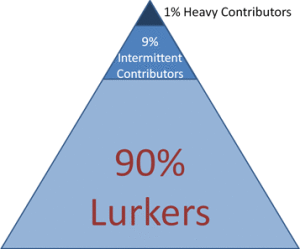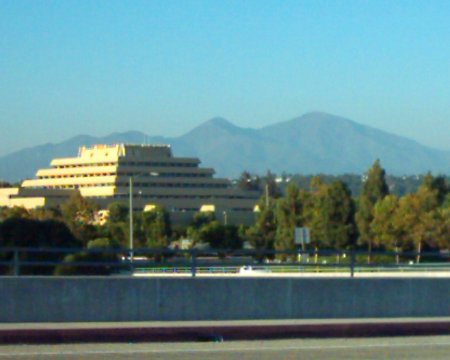
Spotted on a sidewalk in Santa Monica.

Spotted on a sidewalk in Santa Monica.
 Sometimes it seems like more people are talking about Google+ than using it, but it really depends on the community you’re looking at. Comics fans? Not well represented. (But they’re even harder to find on Pinterest.) But “Bad Astronomer” Phil Plait has a thriving following.
Sometimes it seems like more people are talking about Google+ than using it, but it really depends on the community you’re looking at. Comics fans? Not well represented. (But they’re even harder to find on Pinterest.) But “Bad Astronomer” Phil Plait has a thriving following.
It seems like Speed Force’s Google+ Page is starting to attract a bit more participation, and I think that might be in part due to it passing the 100-follower mark. I vaguely recalled something about a 90-9-1 Rule for community involvement, which turned out to be pretty easy to find once I searched for it.
Basically, the rule states that:
There are certain ideas that I find completely acceptable in the context of science-fiction, but completely looney in the context of actual science.
Take, for instance, Erich von Däniken’s premise that gods were really ancient alien astronauts. It’s an interesting idea, but it’s way out there in terms of science. It assumes that (a) myths are historically accurate, (b) aliens exist, and (c) low-tech humans couldn’t possibly have created things like Stonehenge, pyramids, giant stone heads, etc. Not to say it’s not possible that aliens visited the planet in the distant past—just that comparative mythology and architecture aren’t exactly compelling evidence.
On the other hand, I have no problem with the concept in science-fiction. It’s the basic premise of Stargate. The movie and early seasons of SG-1 focused on Egyptian mythology and technology, and in subsequent seasons of the show, just about every ancient legend has turned out to have an alien race behind it. It also figures into the backstory of Babylon 5, with the Vorlons having visited nearly every known race in ancient times, insinuating themselves into local religions and engineering telepaths over the course of centuries.
(via Sclerotic Rings and *** Dave)
Well, I’ve finished The Illuminatus! Trilogy (the novel, at least — I’m still working on the appendices), and in honor of that dubious accomplishment, I present this photograph of the Laguna Niguel Federal Building:

Snapped last week while trying to locate the movie theater showing Donnie Darko, just down the road from Pepsi and Wolverine.
It really makes me wish we’d had the better camera with us, though. We got a cheap one we could leave it in the car and have it for unexpected finds like this, but the image quality really is pathetic.
I’m about halfway through The Illuminatus! Trilogy, and the most apt description is, if you’ll pardon the language, a mindfuck. Once the writing settles into a coherent structure (or perhaps once the reader is attuned to it), the mind starts noticing connections. Everywhere. It’s as if it was written specifically to induce apophenia.
The most insidious part of the book(s) is the frequent use of historical or other authors’ fictional sources. “Oh, there’s Emperor Norton.” “OK, we’re back to Buckminster Fuller again.” “Hey, that’s right, ‘Tekeli-li!’ does show up in both Lovecraft and Poe.” And this constant mixing of fact with fiction, familiar with strange, and things known to be true with things which seem implausible does make you wonder: how much of this did they make up on their own, and how much did they stitch together out of real events, prior works, and creative synthesis?
After all, if you had never heard of Joshua Norton, and one day heard the story of a man who declared himself Emperor of the United States, Continue reading